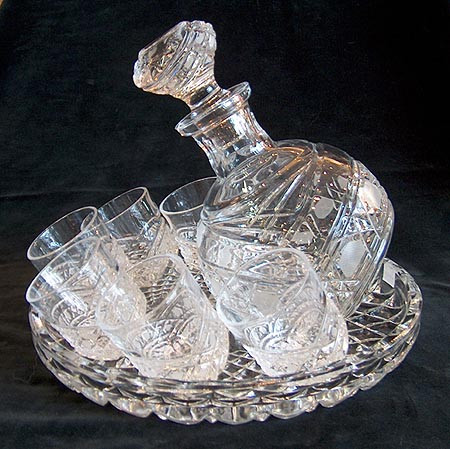Russian crystal is considered one of the applied arts along with fine porcelain and metalwork. As early as the 11th century, glass blowers in Kiev were mastering the techniques for producing glass bowls and cups, glass for windows, and even glass jewelry. By the middle of the 18th century St. Petersburg had become the center for glass production in Russia.
With its many fine palaces, St. Petersburg, provided a steady market for fine glass and crystal. Several glass workshops were opened and employed some very skilled engravers and designers to produce items for the Tsar and members of the Imperial Court. Prince Alexander Menshikov owned two fine glasshouses of his own.
At the beginning of the 19th century there were more than 50 specialzed glass workshops in Russia, however the majority of these produced simple, affordable products for common use. By the end of the 19th century the famous firm of Peter Karl Faberge, located in St. Petersburg, was also producing some fine crystal objects. Since the fall of the Soviet Union in 1991, the Faberge company is again producing fine lead crystal in St. Petersburg.
Today there are several noted producers of Russian crystal, chief among them being the factory of Gus Khrustalny - the Gus Crystal Factory. This factory was founded by Akim V. Maltsov in 1756 and produced both affordable items made from plain glass and crystal and more expensive fine lead crystal objects.
The excellent quality of this Russian crystal was recognized early on and in 1857 Gus Khrustalny was given the right to use the Russian State Coat of Arms on its wares and produced items for every day use as well as finely crafted items for the Imperial Court. The factory was quick to adopt new technologies for glass and crystal production as they became available. The finest examples of the factories product were exhibited at many international trade fairs and were frequently granted awards for their high level of craftsmandship and original design. At the Paris Wold's Fair in 1900 the factory won top honors with a "Grand Prix." award.
Today the factory of Gus Khrustalny employs approximately 4,000 people in the production of Russian crystal items ranging from wine glasses, and decanters, to beautiful flower vases and candy dishes.

